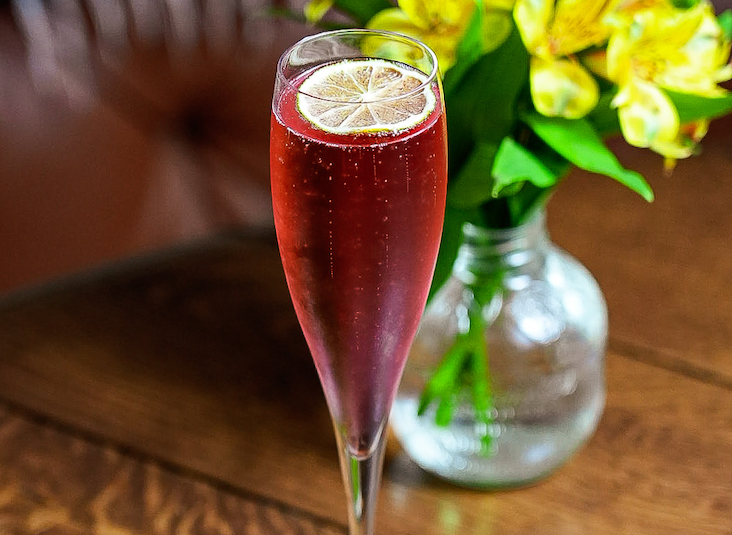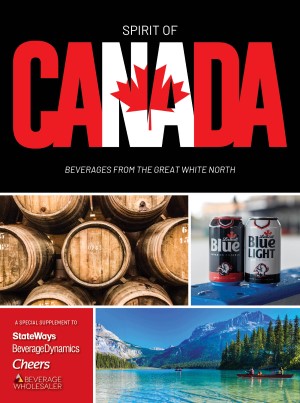Miami, 36 square miles of palm trees and unending beaches, is a vacation destination for many. It also often is called the capital of South America, as the majority of its 2.2 million residents speak Spanish, according to the Greater Miami Convention & Visitors Bureau. The Latin influence, combined with the more than 12 million visitors a year who come for the sun, relaxation and great libations, make for a tropically influenced yet diverse drinks scene.
“It’s definitely an eclectic, multicultural mixture of residents, tourists and snow birds. Nearly everyone in Miami is from somewhere else, so we get a very wide spectrum of tastes, customs and palates,” says sommelier Gabriel Varela at Meat Market, a single location steak restaurant. “It’s a truly global drinks market with tastes and influences representing a vast amount of cultures,” concurs Adrian Najara, general manager of the new Waxy’s on the River Irish Pub, which opened in August.
Despite its many great bars and restaurants, and high levels of disposable income both among residents and visitors, Miami hasn’t historically been known as a great cocktail or wine town. Its drinks often have been criticized for being overly simple and tropical, the wine scene often too focused on familiar South American and Spanish labels, and the beer offerings tending—logically, given the climate—to run on the lighter side.
Yet Miami is home to 9,689 restaurants, 734 bars and 208 nightclubs, according to the Visitors Bureau, its wine and beer offerings are underrated, and a recent spark in the local bartending community has transformed the city into a much more interesting cocktail scene.
Cocktails, Miami Style
The Miami cocktail scene takes inspiration both from the classics and the locavore movement. “We have great access to fresh ingredients year-round; the mangos, grapefruits and mangosteens are beautiful all year,” says John Lermayer, mixologist for the Morgans Hotel Group and head bartender at Florida Room at the approximately 400-room Delano Hotel.
The bevy of local fruits plays a big role in the Miami drinks scene. “Our drink trends in Miami are without a doubt tropical. It’s hot down here,” explains Richie Petronzi, bartender at the Living Room in the 404-room W Hotel in South Beach.
Lermayer adds that although many of the city’s top bartenders are classically trained and from New York, “we do lean towards more tropical flavors mostly due to the fact that that’s what people want when they get here.” Warm weather cocktails also are welcomed by the year-round population. “Latin people love Scotch, pisco, cachaça and rum. So, variations on Pisco Sours, Caipirinhas, Mojitos and Scotch cocktails are a great way to reel people into trying new cocktails.”
The cultural diversity in Miami also influences the cocktail scene.
“Miami is a massive melting pot of cultures. As a bartender, it is challenging to keep up with all the global trends to satisfy everyone’s palates,” says Lermayer. Yet, “nothing is quite so fun as when a group from Peru comes in and sees a collection of piscos on the bar, or when Brazilians see all the cachaça offerings. It is great to make people feel at home.”
The city’s range of influences makes it a crossroads for many cultures, according to Tiberio Lobo-Navia, the tequilier at the 450-room Ritz-Carlton Key Biscayne’s Mexican-inspired Cantina Beach restaurant. The venue features more than 85 different 100-percent agave tequilas. The hotel also has a Rum Bar that carries 53 rums. The two well-received venues were created because tequila and rum were often underappreciated and misunderstood, according to Lobo-Navia.
Meat-based cocktails and molecular interpretations also are popping up all over town, according to Lermayer, in keeping with major national drink trends. Health is a big focus, too, in a city where residents have constant beach access. In perhaps a nod to this trend, Lermayer notes that a move toward fresh and green cocktails also is really taking off in the city.
Increasing Professionalism
Most drink experts who work and consult in Miami say the city’s drinks scene has been improving at a dramatic pace over the past couple of years. “The way the cocktail culture went from 0 to 60 in four seconds is pretty unique,” says the W’s Petronzi. “Nothing was being done in this town five years ago that had anything remotely to do with a well-balanced cocktail. Now, everyone is rushing to jump on the train.”
“Over the past three years, I have begun to see high quality cocktail bars passionately bringing innovation and improved executive to the region,” notes drinks consultant Ryan Magarian of Portland, Ore.-based Liquid Relations; Magarian just completed a consulting project at the 162-room Viceroy hotel’s Mediterranean-inspired restaurant, Eos.
“Bartenders and owners are taking pride in their product, and it shows,” concurs Petronzi.
Lermayer adds that the city just launched a chapter of United States Bartenders’ Guild, which would have been “unthinkable a few years ago.” This is significant step for Miami’s bartending community, and one that is likely to help the local drinks scene become even more sophisticated in the next few years.
Unsung Heroes
Given the broad cross-section of tourists and locals, name recognition and crafting a comfortably familiar wine list is often a priority in Miami. The city’s “inherent variety brings us the full spectrum of wine drinkers,” says Meat Market’s Varela, “making it necessary to build a wine list that can fit many situations.” He adds that “Miami is making a concerted effort to elevate dining as a whole.”
Varela goes on to note that Miami plays host to “ everyone from the European tourists who want to experience a new wine from the United States, or those who have moved here and are looking for a taste of home, to savvy American wine enthusiasts who own private cellars.” The city’s wine lists have to accommodate and cater to all these diverse tastes. What’s more, the city is home to a broad base of “South and Central American residents and tourists who are extremely excited and proud of the wines they are producing in their homelands. And from time to time we’ll be serving the value-conscious guest who is celebrating a special occasion but looking for a great deal on a decent wine.”
Miami’s particular focus on Spanish and South American wine is a logical progression given that the city has so many restaurants serving Latin and South American cuisine, notes Mackenzie Park, the sommelier at contemporary American restaurant, Michael’s Genuine Food & Drink.
“Part of Miami’s uniqueness is that it’s the gateway to South American wines,” explains Cynthia Betancourt, the wine director at Mediterranean and Asian restaurant, Azul, in the 326-room Mandarin Oriental Hotel. She adds that “the Latin market is very loyal to the Argentine and Chilean wines. Most of the producers from both countries are very familiar to them, so it’s also a comfortable and consistent buy. Throughout the year, I keep a good, solid selection of South American wines.”
Argentine Malbec continues to be a popular wine for a variety of reasons. It has a strong and unique flavor profile, is well priced and hails from familiar territory for many residents and visitors. “Malbec has become a particularly asked-for wine,” says Meat Market’s Varela. Argentina is a country “where guests can get a big bang for their buck, and the fact that it is a wine that pairs very well with a large number of foods has made it a great crowd-pleaser.”
The South American wine focus aside, Betancourt says Miami wine drinkers can be an experimental lot. “If I see red wine with oysters, I know I am in Hot Miami! People drink what they like despite the obvious,” she says. “They are open to trying new regions and varietals, but you have to make it approachable.”
In terms of beer consumption, Najara of Waxy’s thinks Miami residents and visitors have a pretty well-rounded palate. He adds that traditional Latin brands still make a good showing, but the level of beer offerings around the city continues to improve. He adds that “cold beer goes great with seafood, which we have a ton of, and spicy foods, which are prevalent because of our cultural influences. Beer and Floridian cuisine combined with our warm climate have always gone hand in hand.”
At traditional Cuban stalwart, Versailles, with one location in the city and kiosks at the Miami airport, Heinekens
and Coronas are top sellers, according to Nicole Valls, an owner. The restaurant also sells a host of tropical drinks, including Piña Coladas and Mojitos, Daiquiris, Margaritas and Cuba Libres.
Drinks culture in this highly diverse city has grown by leaps and bounds over the past few years. As Miami evolves into a noteworthy drinks destination in its own right, only time will tell what new drink trends will emerge from Miami’s diverse tastes and Latin heritage.




